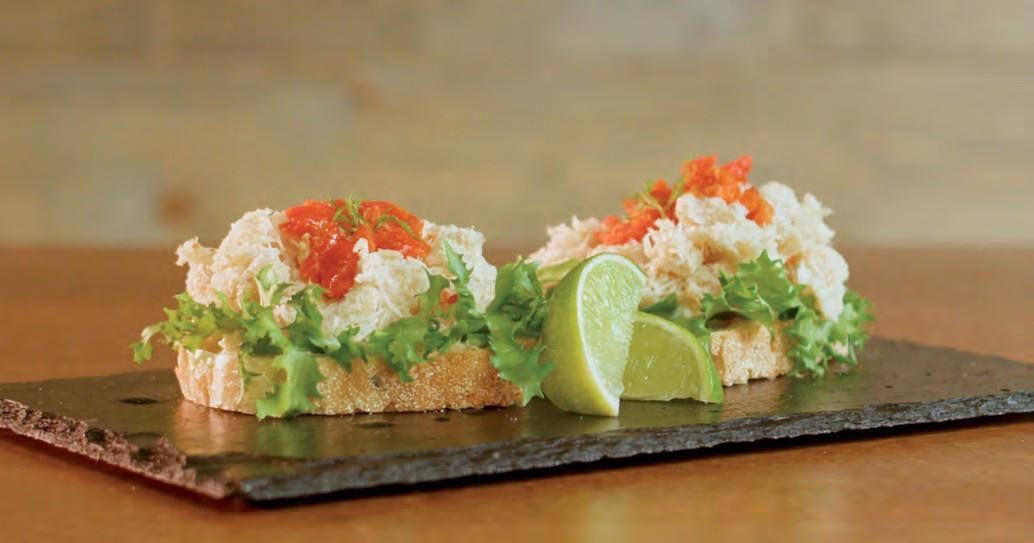

Crab_materie 15-04-21 14:19 Page 4








Crab_materie 15-04-21 14:19 Page 4





The edible crab is a familiar and much-loved creature along much of the Norwegian long coast. Its characteristic appearance with a thick red-brown shell, lighter underside and large claws with black claw tips makes it easily recognizable. In places where it is abundant, it forms the basis for an important commercial coastal fishery. But the crab is also attractive to recreational fishermen and is considered a treat for shellfish lovers from the Swedish border in the south to Troms in the north.
Despite its popularity, knowledge about the edible crab is often limited, and researchers and marine biologists receive many questions: Where does the crab live when it's small, what does it eat and why is there sometimes so little food in it? Does it feel pain?
Before we wrote this book, we have received many such questions over the years. That's why we felt it was time to summarize our knowledge and share it with others. In total, we have worked for more than 90 years on various questions related to the biology, physiology and behavior of crabs and other crustaceans.
As biologists, we wanted to emphasize basic biological knowledge. In particular, how the crab, with its behavior and well-developed sensory system, has adapted to different life stages and environments. We also wanted to visualize the text as much as possible and have therefore illustrated it with hundreds of photos.
We recognize that the story of the edible crab is much more than just a tale of biology. The exciting story of how the crab has gone from being seen as a nuisance in fisheries to becoming a sought-after seafood product is also included.



The Crab_materie 15-04-21 14:19 Page 5

We've tried to convey some cultural history about the crab, and also how crabs are visualized inmodern art and culture.
Food quality and animal welfare are important topics, as is knowledge of how the crab is caught and cared for. A book on the edible crab must therefore naturally address how it should be handled, how it can be humanely killed, and how it should be cooked and prepared to give the best possible result.
Working on the book has been an exciting and instructive journey - but not without its setbacks. However, these hills would have been considerably steeper had it not been for a number of people who have assisted throughout the process.
We would therefore like to take this opportunity to thank the employers and families who have given us the peace of mindtobeabletoimmerseourselvesinthesourcematerial, focus on writing, photographing and collecting images and illustrations when necessary.
We would like to thank our colleagues, researchers, fishermen and people associated with the crab industry. Valuable advice and inputs from our colleagues, researchers, fishermen and people associated with the crab industry have support us throughout our work on the book, as well as their sharing with us knowledge and experience over a number of years through our various project collaborations. We would also like to thank the divers, especially the photographers, who have been both a source of knowledge and inspiration in the work of documenting the crab in its true element.
A numberofindividualshave kindly madephotos available for this publication, thereby enhancing the book's content (see photo credits at the back of the book). Anette MoeKittelsen and Henning Røed have provided important input and helped to shape the book into what it has become. Thanks to all of you.
Last but not least, thanks to our invaluable editor and designerØivindBerg,whounderstoodwhat we wanted and steered our book steadily in the right direction.
Astrid, Snorre and Gro Midsund, Ålesund and Austevoll, 2021



THE CRAB - a shellfish in a class of its own
"There is a good smell and taste in the water" Exciting hunt for a shellfish feast Light hunt for crab Crabbing over the counter Crab festivals
HUNT FOR THE CRAB
Fishing for edible crab - rules and animal welfare
Tough - yet fragile Claw tearing Rules and management Rope etiquette Ghost fishing Clean-up



THE CRAB - a biological portrait From Fuerteventura to Finnmark, Norway. Life as a crab larva
The smallest crabs
Growing up
Habitats - the crab at home Eating or being eaten?
Artificial reefs Competitors or good neighbors? Adult crabs’ Sexual maturation and external sexual characteristics Shell change and growth Mating The hunt for food Large crabs' habitat Movement and migrations


THE CRAB - physiology - the inner life
The nervous system
Hearing and vision
Smell and taste
The crab under the carapace
Anomalous appearance and diseases
THE CRAB - a cultural-historical portrait
Cancer - the origin
Crab in Norway Artistic inspiration

THE CRAB - fishery and production
The golden age of canned food
Restructuring measures in the industry
The challenge "Crab's food content"
Assessment of food content in live crab
Improving crab's food content - feeding
Humane handling of crab
Mechanical cleaning
Today's crab industry and production companies
RELATIVES OF THE CRAB
- on the shellfish table
THE CRAB - preparation
Sorting: keep, throw back?not?
Cooking and cleaning
Is it dangerous to eat crab?
THE CRAB - our best recipes
Sources


SCIENTIFIC NAME: Cancer pagurus
Norwegian: Taskekrabbe, Brunkrabbe, Rødkrabbe, Høvring, Paltosk, Skryda, Breiskorpe (male crab), Nadd (male crab), popularly called crab.
English: Edible crab, Brown crab
Swedish: Krabbtaska
Danish: Tanner crab
German: Taschenkrebs, Zeekrab
Dutch: Noordzeekrab, Hoofdkrab, Slagkrab
French: Le crabe dormeur, Poupard, Tourteau
Spanish: Buey de mar
Portuguese: Caranguejola, Sapateira
Italian: Granciporro Atlantico
SIZE:
Maximum size: 30 cm shell width, 5 kg. Largest crab registered in Norway: 25 cm (male) 22 cm (female crab)
Sexual maturity: 11 cm shell width
Minimum dimensions BTY 2024: 13 cm shell width north of Rogaland, 11 cm shell width from Rogaland to the Swedish coast.
BIOGEOGRAPHY:
Distribution: Eastern Atlantic from the Canary Islands to Finnmark in northern Norway.
Depth: From the intertidal zone to depths of several hundred meters. Most common at depths between 20 and 100 meters
ECOLOGY:
Prey: Crustaceans, snails, shells, polychaetas and echinoderms.
Predators: Birds, fish, crustaceans and squid.


The Crab_materie 15-04-21 14:19 Page 10

shellfish in a class of its own
"The water has a good smell and taste"
A large male crab stands on the bottom. Its eyes move slowly from side to side and the short, powerful antennae between its eyes move quickly up and down. The antennae are the crab's most important sensory apparatus, and they signal to the crab where the good smell is coming from. After a while, he starts to move. He crosses sideways so as not to lose the direction of the smell. The sensory hairs that cover the walking legs help to keep the direction towards the target
As he approaches, the taste pits on the powerful claw tips are also filled with the tempting flavor. He bumps into a fence and examines it with his claws and walking legs. "Is there an entrance The crab pauses - indecisively. He smells that his fellow crabs are already helping themselves to the goodies inside the hindrance. He investigates further, finds an entrance and reaches his destination: Fish meat.
After a while, it's full and content and wants to move on. But where is the entrance now? The crab searches but finds no exit escapes. He is trapped.
For now, the crab is safe in its undersea enclosure, unaware that its life will soon be over. When the pot is pulled, the crab will be euthanized and prepared for human consumption.



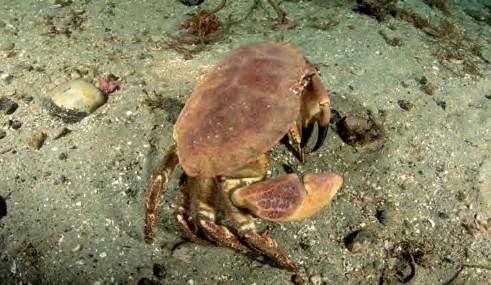



The Crab_materie 15-04-21 14:19 Page 11

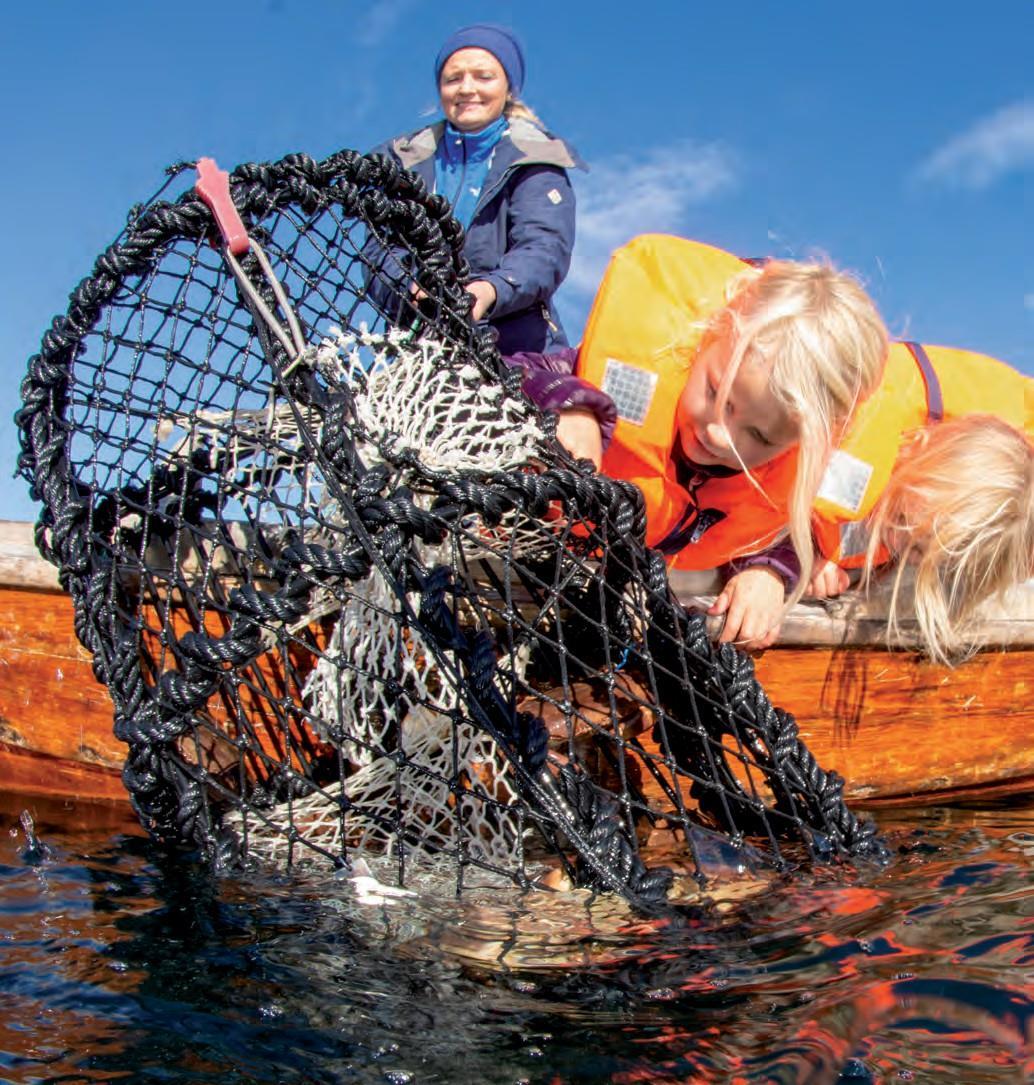



For many people, pot fishing is the very motivation to go out on the fjord or into the sea. It's about anticipation and an ancient instinct linked to hunting for food through hunting and fishing. Humans have been doing this for millenniums and longer, and we still get excited about it. After all, what could be better than a fine late summer's day at sea pullingpots? It's just as exciting whetheryou're three, thirty or sixty. Children, parents and grandparents are just as curious about what's in the next pot that's pulled. Sharing experiences, knowledge and passing on experience creates a love of nature that never goes out of date.
Best of all: This is just the beginning - the prelude if you like. Because crabs can provide pleasures in more ways than one. After a great trip to the sea, the next highlight comes: Preparing the catch and creating a cozy and festive atmosphere based on the great raw material provided by the sea.
The social setting around the cooking process and being able to share a good meal with family and friends is just as important as the fishing experience itself. There's no need for a catering kitchen here. Simple equipment will do: A large, wide crab pot, a stove or gas burner, something good to drink and expectant guests who are prepared to make the bestuseofthetimeittakestocookandcooldown thecrabs
When everything is in place, the table is prepared, inside or outside, depending on the weather. 12






The Crab _materie 15-04-21 14:19 Page 13







The Crab _materie 15-04-21 14:20 Page 14

Covered for shellfish party
Any festive table looks its best when decorated with typical seasonal elements: Summer flowers, seashells and sea urchin shells along with some dried or fresh seaweed. You can also keep it simple with just glasses, plates and saucers, as well as a large bowl for empty shells.
A spoon or a nutcracker is all it takes to get the meat out of the large claws. An experienced crab eater easily sucks the meat out of the legs. The patient crab eater appreciates the foot base- or what many call the "crab house" This is the part of the crab where the claws and walking legs are attached - and it is often full of delicate crab meat.
White bread, mayonnaise - and maybe some steamed mussels, lemon wedges and some sweet pieces offruit from mango, melon or avocado, can add a spice to the meal.
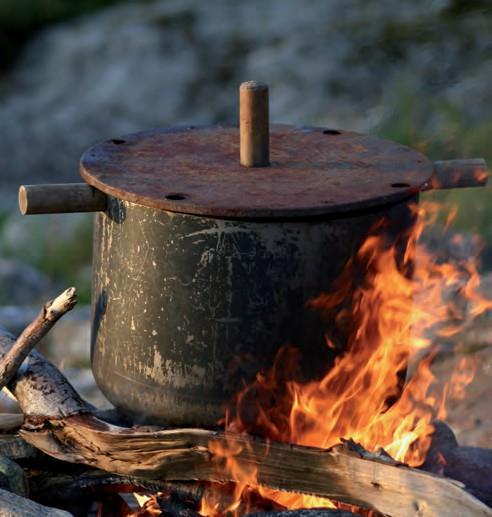





The Crab_materie 15-04-21 14:21 Page 38

In Norway, most people are probably familiar with edible crabs from exciting pot hauls and from cozy shellfish meals. Children are perhaps more filled with wonder about these strange creatures with the large shell, the small eyes on stalks and the two large claws. Is there an animal inside the rust-red armor above the eight spindly legs? Let's share the children's wonder and follow these special marine animals in their true element - in the sea - and look at their distribution and how the crab develops from larva to adult.
From Fuerteventura to Finnmark
The edible crab is found in the north-eastern Atlantic. We find most of them along the French Atlantic coast, in the English Channel, around the British Isles and northwards along the coast of Norway. It is also found in limited numbers in the northern parts of the Mediterranean. The southernmost reported sighting of the crab is just north of the Canary Island of Fuerteventura. The most northerly sighting is at Sørøya in western Finnmark, where the edible crab is considered a relative newcomer (see page 40).
In other words, the edible crab is in fact distributed from sub-tropical to Arctic regions. This demonstrates an exceptional ability to adapt to different environments and living conditions. It also lives at different sea depths. In Norway the edible crab is usually found in relatively shallow water, at a depth of 10-30 meters, during the warm season, but when the temperature drops it often moves into deeper water.

38

This is probably because the temperature is more stable at depth during the winter months. It is not uncommon for fishermen to catch large quantities of edible crab in nets set at depths of several hundred meters in winter. Crabs have been recorded as deep as 570 meters
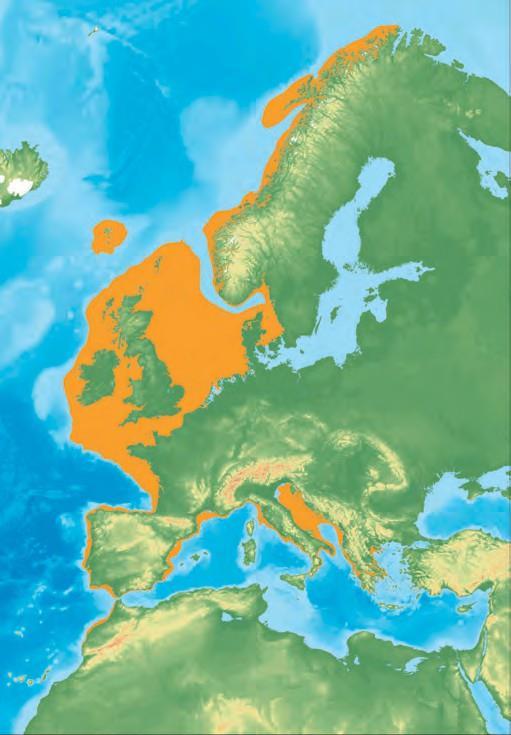


The Crab_materie 15-04-21 14:21 Page 39

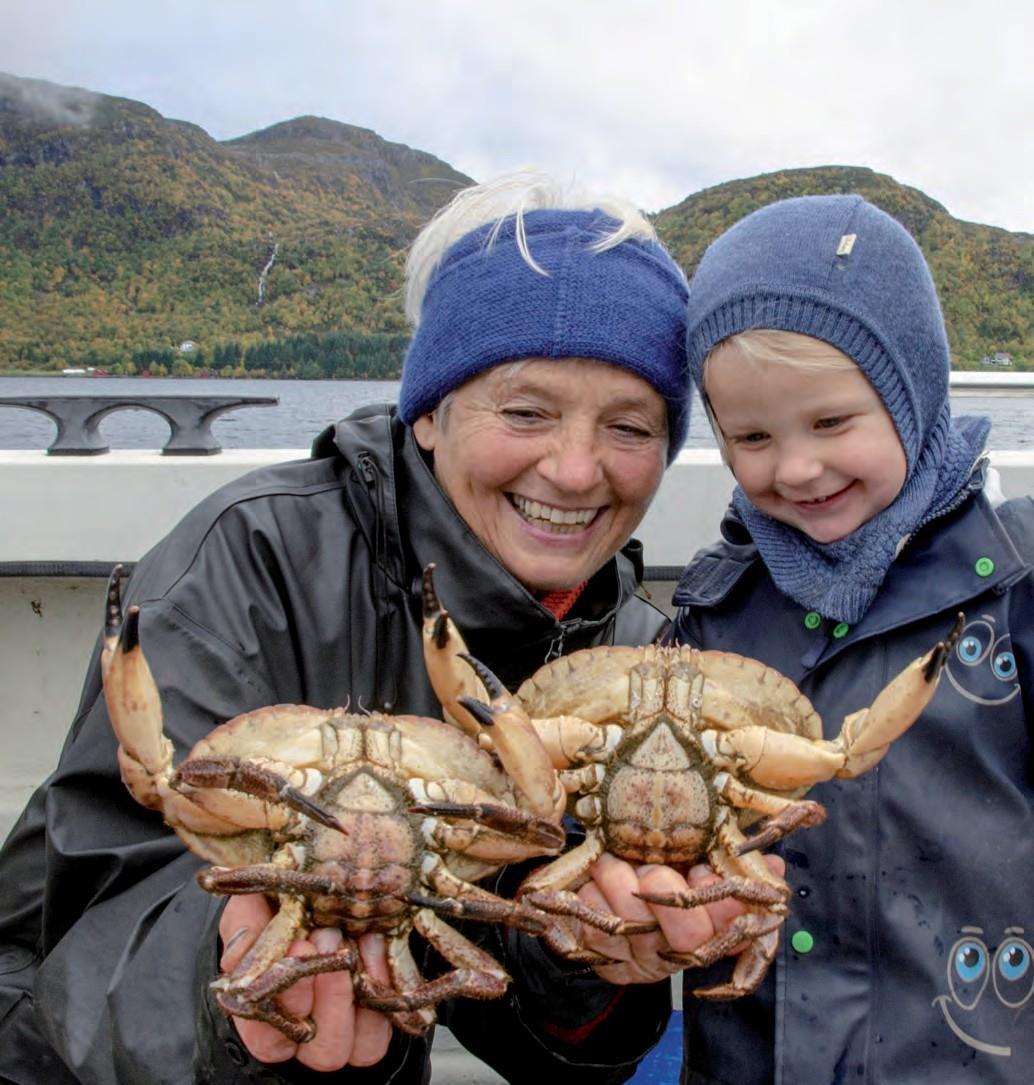



Duringasummerdive,youmaybeluckyenoughtowitness the fascinating crab hatching. The pregnant female crabs are often well hidden between kelp leaves and rocks. Beneath the tail flap there is an indeterminate, dirty grey ball with small eggs. This "egg ball" was shiny red during spawning,butafterthefemalecrabhascarriedthe fertilized eggs under the tail flap for seven to eight months, the nutrients in the yolk are almost completely used up. Throughthe transparent eggshell, a pairofeyes and thehint of a shell are all that is visible of a living larva. These tiny larvae have reached the stage where they have to leave the safe existence well protected inside the egg under the wide tail flap. When the time is right, the female crab swings the tail flap back and forth. With powerful and rhythmic movements, clouds of tiny living creatures are dispersed into the water.
In Norwegian waters, hatching takes place from June to August - somewhat earlier in the southern parts of Norway and somewhat later in the northern coastal areas.
When the eggshell bursts and the crab larvae are free in the water masses, the toughest and most dangerous period in the crab's life begins.

Hatching edible crab. The roe ball attached under the tail flap is dirty grey. The small, dark dots in front of the crab are newly hatched crab larvae that have been ejected into the open water.


Hundreds of thousands to millions of crab larvae are an important part of the zooplankton in the ocean. Along with other zooplankton, they drift in the open water to wherever the ocean currents take them. When the larvae drift with the free water masses, we say they are in the "pelagic phase". For many newborn crab larvae, this is both the beginning and the end of their lives.
Normally, the larval phase lasts from one to two months, depending on the temperature of the sea. The colder it is, the longer it will take for the larva to grow. At temperatures lowerthan 7°C, thedevelopmentofthelarva will stop. Studies conducted both in the sea and in the laboratory show that the water temperature should be somewhere between 10 and 15°C if the larvae are to develop optimally. Since particularly high temperatures over time along the Norwegian coast rarely happens, we believe that the larval phase is more prolonged in the Norwegian waters compared to more southerly waters in Europe.
In addition to temperature, access to food is of course also important for the larvae to grow and develop. When the larvae hatch out of the egg, they don't have a "lunch pack" like many fish larvae do. If they don't find food within the first few hours, they will die. We don't know for sure what crab larvae actually eat, but phytoplankton and other zooplankton are probably both an important part of their diet.
Crab larvae are also prey for many predators, not least a wide range of fish species.


The Crab _materie 15-04-21 14:21 Page 43





Larvae need to shed their shells in order to grow. This is a new, dangerous period in life and a process that can easily end in disaster. And it's not enough to be lucky once. The tiny crab larvae have to go through as many as eight shell moults before they become a bottom-dwelling crab. The first stage, when the larvae most resemble a small tadpole, only lasts a few hours. At the next shell change, the larvae have developed strong and long spines. The tall spines protruding fromthe carapaceare typicalofcrab larvae from many species. This form is called the zoea stage and is retained through the next five molts. At the seventh molt, the crab takes on a new shape, known as the megalopa stage. The spines are now greatly reduced. The tail has the familiar joints that both crabs and lobsters have, and a crablike shape can be discerned. When the crab has reached the megalopa stage, it starts looking for a suitable area on the bottom to settle. It is assumed that this settling takes place between September and October in Norwegian waters. Once the megalopa has settled on the bottom, its tail is folded under its belly, and it prepares to shed its shell once more. Out of the megalopa shell crawls a tiny edible crab. It is ready to spend the rest of its life on the bottom.

The images below, top: The larva in the first six stages is called zoea, and the larva has a characteristic spike. Bottom: Megalopa - the crab larvae seventh molt heralds a change as it now heads to the bottom for Finding a place to settle down (this phase is often referred to as settling down).
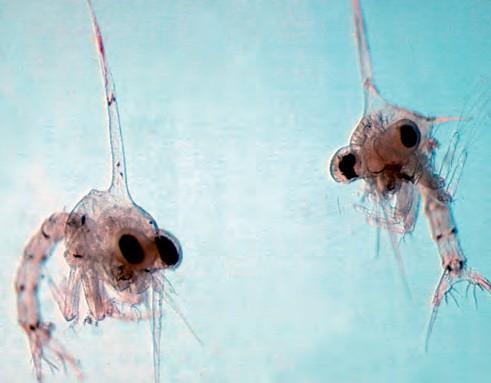





The Crab_materie 15-04-21 14:22 Page 45

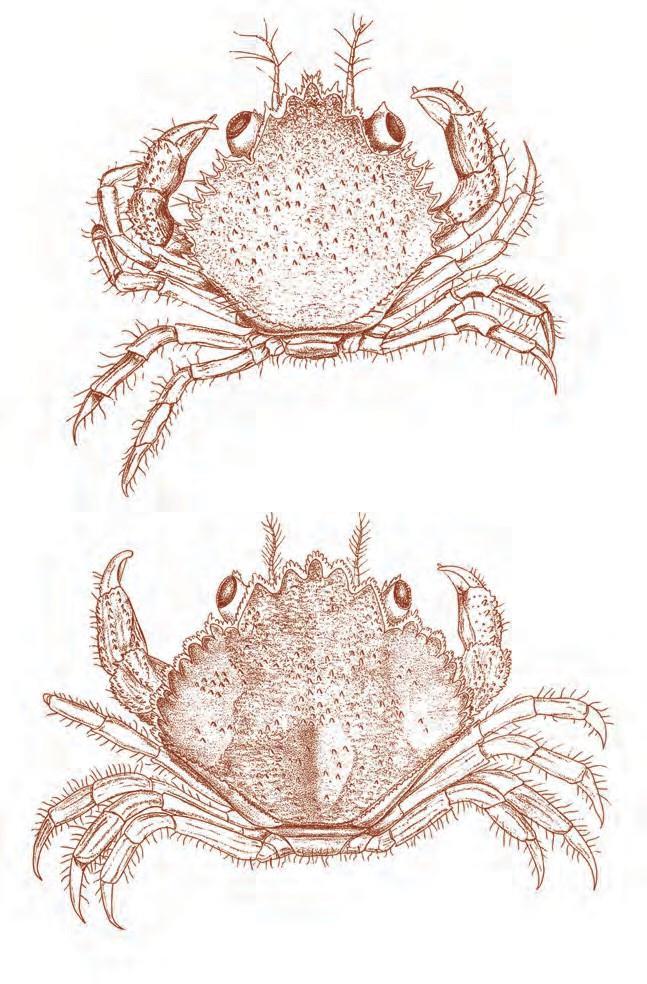




The smallest edible crabs
Once the megalopa has found a bottom it likes and shed its shell once more, it is ready to start life as a young crab. It hasacquiredtheclassiccrabshapewithitstailtuckedunder its abdomen, even though it is only two to three millimeters in size. Small edible crabs that have not reached sexual maturity are called juveniles. These young crabs spend the first few years of their lives in shallow water.
Since the young crabs are small and well hidden, there are few pictures of the first bottom-dwelling stages. What we do have are lifelike sketches from England that are more than a hundred years old. There we see a fascinating little creature with large, dark eyes.
The lack of good observations of the smallest crabs, not to mention good photos, piques the curiosity of inquisitive crab enthusiasts. This has resulted in an exciting photo hunt and here are some outstanding images of the edible crab in its first year of life.

The images on the opposite page, top: An edible crab in its first year of life. The shell width is approximately 10 mm, and the edges of the carapace are still slightly serrated as in the first bottom-dwelling stages. The photo was taken in March, and since crab larvae hatch in September-October, we can assume that this crab is about six months old.
Through observations, we now know that the claw tips of the edible crab are black from the time the crab settles on the bottom until it is an adult edible crab. The shell color is mainly brown, but very light-colored individuals are also found. The small crab is completely dependent on the area where it settles providing hiding places that allow it to avoid being eaten.
In order to grow, the crabs must search for food, and the combination ofhiding and hunting can be very challenging. Mortality is therefore high in the first few months as for a bottom-dwelling crab. We have reason to believe that as many as 60 per cent of bottom-dwelling crabs die during their first six months of life. Only when the crab has managed to find a suitable hiding place that it can utilize and keep free from competitors will the risk of being eaten be greatly reduced.


Photos opposite page, bottom: This small white crab was barely 20 mm wide when it was found in the aquarium at Atlanterhavsparken in Ålesund. Its carapace was creamy white, as were its claws, but the claw tips themselves were black, which is one of the crab's defining characteristics.


The Crab_materie 15-04-21 14:22 Page 47

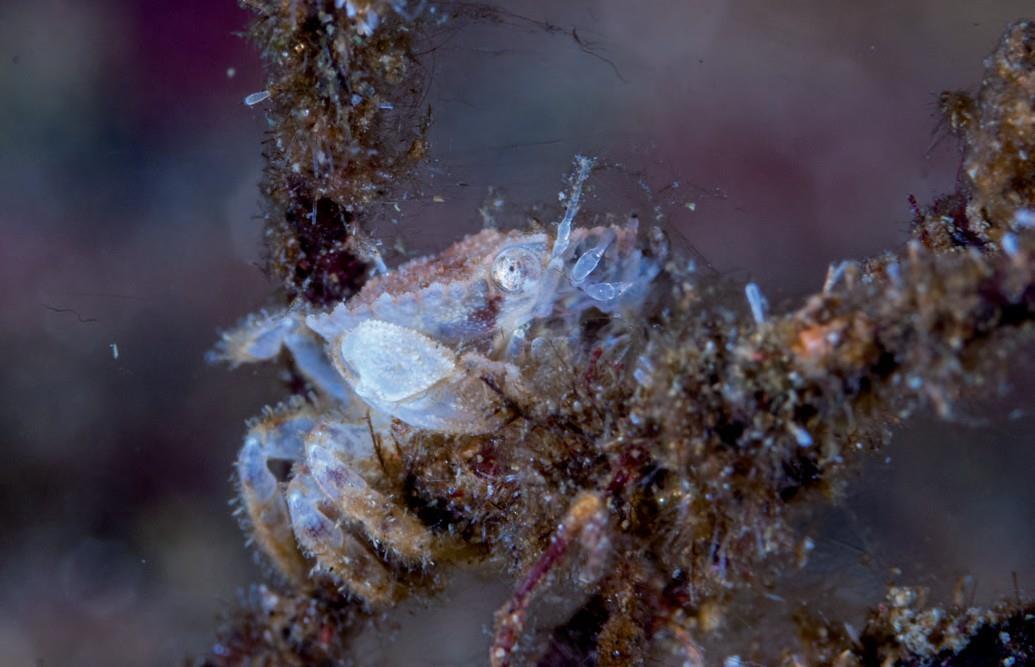
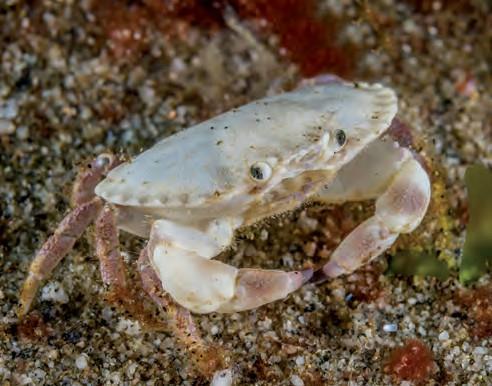
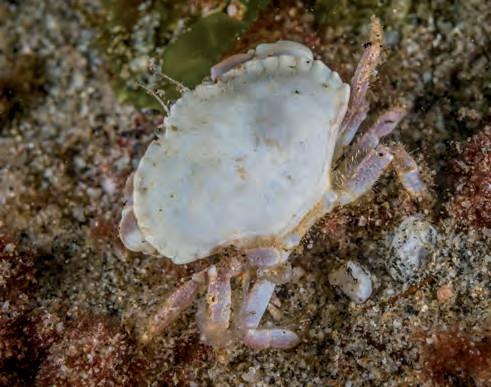



Opposite page: At the bottom, under rocks or the protective roof of kelp leaves, there is an exciting world. In such places, the youngest edible crabs find both good hiding places and good access to food.
In order to grow, the crab must continue to change into ever larger shells. Its growth depends on how often it sheds its shell and how much it grows with each shell change. The first growth survey of small edible crabs was carried out on the east coast of Scotland in the early 1900s. Over 2,000 individuals were found under rocks in the intertidal zone and measured.

It was concluded that the crabs changed their shells five to nine times in their first year of life. The width of the shell increased by approx. 25 per cent with each shell changewhich has subsequently proved to be true. After the first year of life, the crab had a shell width of 30 millimeters. In the second and third year of life, the crab was found to have two moults per year, and in the fourth and fifth year of life it was down to one moults per year. By the time it is five years old, the crab will have increased its shell width to around 110 millimeters and is approaching the size it will be when it reaches sexual maturity.
However, it is important to note that these are English and Scottish studies, and that the situation is different along our coast. Similar studies conducted on the outer coast of Trøndelag indicate that juvenile crabs have fewer shell changes per year than in English waters. The crabs therefore only reach a shell width of30 mm after two years, and will then need a minimum of seven years before they reach 110 mm. We believe that this is due to the fact that Norway have lowersea temperatures than in British waters.

Crabs that have just undergone shell molting have a relatively pale and smooth shell. Gradually, the shell color darkens and swimming larvae from other invertebrate species attach themselves to the hard crab shell. It is most common for mos anmals (bryozoans) and small calcareous worms to attach themselves to the crab shell. These growth organisms contribute to additional camouflage for the edible crab.
Moss animals are colonies of tiny animals that grow like lime lace on kelp. Lime tube worms are most often found on rocks and rocky outcrops. The small, spiral-growing post horn worm thrives on crab shells - and on other hard surfaces. They are therefore often found on both equipment and litter that has been in the sea for a while.

Small edible crabs in various stages of growth. The three crabs in the picture to the right have shell widths of 20 mm, 38 mm and 49 mm.


The Crab_materie 15-04-21 14:22 Page 49

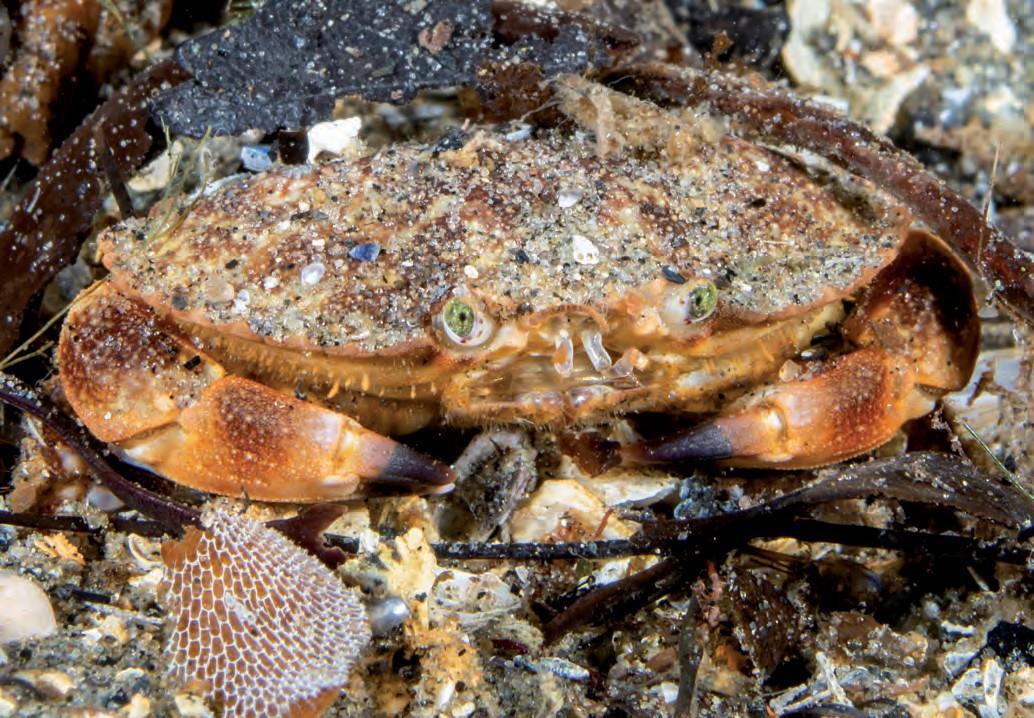




Competitors - or good neighbours?
Both on land and in the sea, there will always be competition to find the best hiding places. In the habitat of the small crabs, other small crustaceans and small fish are also constantly searching for the perfect hiding place. The smallest crabs initially have to defend themselves, but as they grow they turn into hunters who prey on other small animals that seek shelter in their own habitat. But every time they shed their shells, they are left defenseless and soft. Like all crustaceans with soft and vulnerable shells, they stay hidden and very cautious.
Children and adults alike are often amazed by all the small crabs that can be found in the tidal zone hidden under rocks and seaweed tassels.Many ask ifthese will grow tobecome large edible crabs. But the crabs in the shoreline are mostly common shore crabs, some fierce hotheads that actively defend themselves with claws able to pinch quite hard.
A little deeper than the littoral zone, there are several species of crab which are adult while not larger than young edible crabs. Of these, bristly crabs and Risso's crabs, with their powerful claws and compact bodies, are the species thatmostcloselyresemblesmallediblecrabs.Tofindthem, you should put on a diving mask and flippers. You'll need to lift rocks carefully, look in cracks and cavities, and brush away sand between the rocks. Because these crabs have many hiding places and live mostly hidden - both as juveniles and in their adult life.


The picture on the opposite page shows examples of preyand enemies: These individuals are all found in the attachment organ of two large kelp stalks that were harvested by a diver.
Here it was found Hair crab, porcelain crabs, coffee bean, troll lobster fry, bristle worms and rock drill shells. The largest was the hair crab, which had a shell width of 20 mm.
Swimming crabs are also found along the coast. It is quite similar to the shore crab, but the rear pair of broad walking feet is clearly shaped like a paddle. Then there are the tiny porcelain crabs, which aren't really crabs at all, but belong to the same group as hermit crabs and troll lobsters.
In 2020, an Asian crab species was also found on a beach in the outer Oslofjord, the invasive brush crab.
A neighbor that is not crab-like, but is nevertheless a possible competitorto ediblecrabs, regardlessofsize, isthe well-known lobster.
Below:
The hold-fast region organ is also a good hiding place for the smallest crabs.




The Crab_materie 15-04-21 14:45 Page 59






The Crab_materie 15-04-21 14:45 Page 60
Fishing for shore crabs is a popular summer activity. A wooden stick is sufficient for a fishing rod, twine is a good line, and a clothespin is a well-functioning hook. There are plenty of mussels for bait on the shoreline, and the shore crab is easily be easily - again, and again.

Common shore crabs (Carcinus maenas)
The shore crab rarely grows more than six to seven cm across the shell. This species has a limited number of moults changes before they reach their maximum size and stop growing. If you look closely, you'll notice that the claws are missing the black claw tips that characterize the edible crab. In addition, the carapace has five pointed lobes on each side of the carapace, as opposed to the ten rounded lobes of the edible crab. When shore crabs and small edible crabs meet on their search for food, size will probably determine who gets the prey.
Up in the barnacle belt in the upper tidal zone, there is competition between the edible crabs and the shore crabs. Both want barnacles, and even more, mussel juveniles Here you can observe claw fights where they stand against each other.
Bristly crab (Pilumnus hirtellus)
The bristly crab is a small crab that is barely 30 mm wide above the shell. The legs and thetop ofthe shell are densely covered with club-shaped growths (sensory hairs). The claws are strong, and the claw fingers are brown, unlike the black claws of the edible crab. One claw, usually the right one, is larger than the other. The claws of adult females are smaller and not as hairy as those of males. The colors are brownish red or dull purple, providing good camouflage. Hair crabs are also commonly found in large kelp beds where, like small edible crabs, they can find shelter and food.




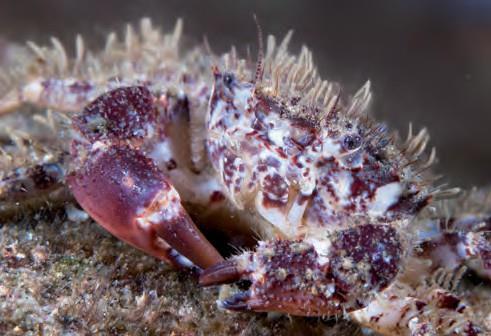

The Crab_materie 15-04-21 14:45 Page 61
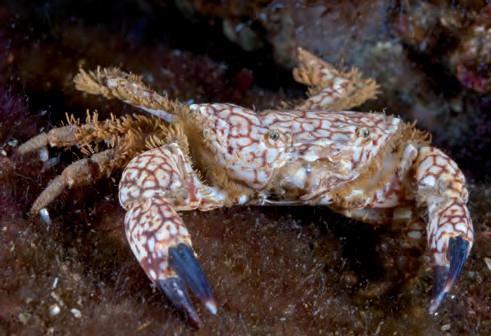


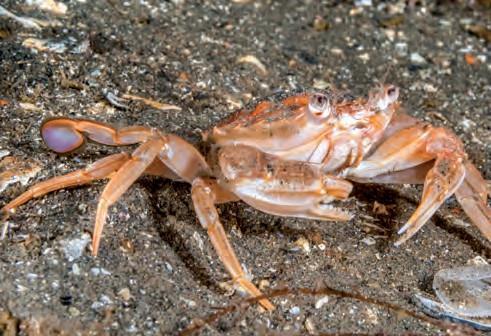


Risso's crab (Xantho pilipes)
The Risso’s crab grows a little larger than the bristly crab, up to 40 mm wide over the carapace, which has five lobes on each side. Risso's crabs have strong claws and black claw fingers, just like the edible crab. It thrives best under large and small rocks or buried in coarse shell sand and sand. Risso's crabs tend to be better hidden under rocks and buried longer in sand than bristly crabs.
Swimming crabs (Liocarcinus)
Swimming crabs have a paddle-shaped joint at the end of the fifth (back) pair of legs. This enables it to swim, primarily for escape.
Both the arch-fronted swimming crab (Liocarcinus navigator) and the harbour crab (Liocarcinus depurator) prefer bottoms with gravelly sand that they can quickly burrow into. There are more species than these two. It is likely that there may be interactions between the swimming crabs and the small crabs.
Porcelain crab (Pisidia longicornis) Porcelain crabs can be numerous. You can find them on gravel bottoms, under rocks and in kelp beds, places where even small edible crabs can be found. However, with a maximum shell length of 10 mm and good camouflage colors, they are difficult to spot. If they are frightened, they dart away incredibly quickly despite their disproportionately large claws. Porcelain crabs only have three pairs of walking legs. This distinguishes them from "real crabs", which have four pairs of walking legs. Porcelain crabs are probably a good snack for small edible crabs.


The Crab_materie 15-04-21 14:45 Page 62

The Asian shorecrab (Hemigrapsus montagui)
The invasive species The Asian shore crab has been found on a beach near Tjøme. It has been expected as it has been at the top of the list of Norwegian doorstep species. This means invasion species that are already present in our neighboring countries. The brush crab arrived in Europe along with the Pacific oyster, a species that was imported for aquaculture. Over several decades, these have spread northwards from the Bay of Biscay. The crab arrived in Denmark and Sweden in the early 2000s and was first found in Norway in 2020. It can be a competitor for young edible crabs, but for the large crabs it is more like a new prey item.
European lobster (Homarus gammarus)
Lobster juveniles hatch at around three cm total length. A number of fish and crustaceans, particularly wrasse, sculpins, cod andshore crabs,prey onnewly bottom-settled lobster juveniles. It is therefore reasonable to believe that when lobsters head for the seabed, it is crucial that they avoid competitors and all the predators that hunt on the seabed. For the first few years, it therefore lives completely in hiding. It is very rare to see any it before it reaches about 10 cm.


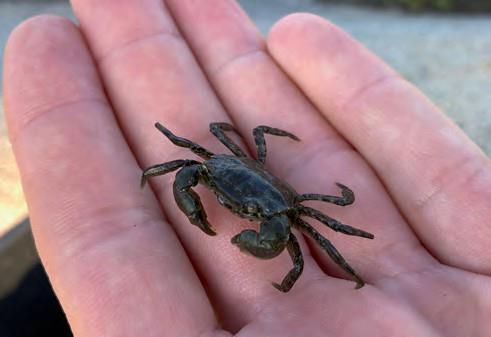
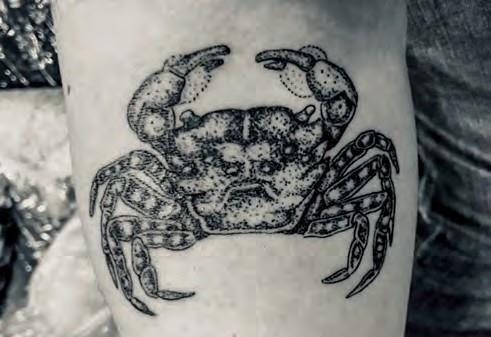
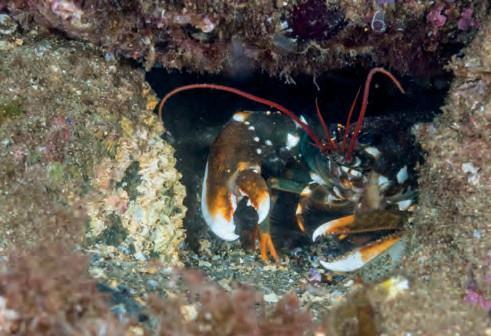

The Crab_materie 15-04-21 14:45 Page 63


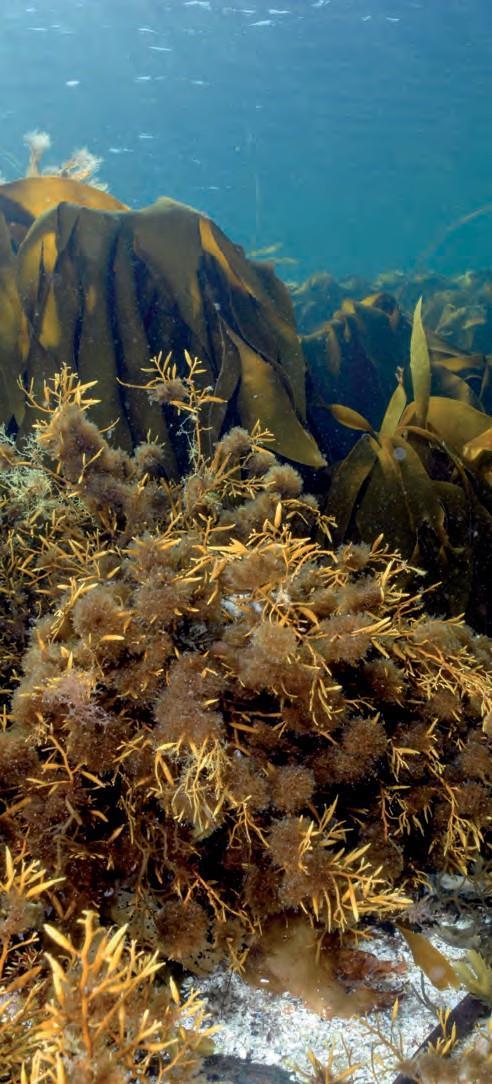

All the kelp is attached to rocks or mountains, and the sandy patch creates an opening in the dense vegetation and in the edge zone, the sea oak gets enough light to thrive. This is where the tiny edible crab and other crab species find both hiding places and food.
Small lobsters are found in the same habitats as edible crabs,onamixtureofrocks,rocksandsandybottoms,often in combination with an algae cover. However, small lobsters seem to prefer more protected areas.
In our search for small edible crabs, we have found several specimens of lobsters of approximately 10-12 cm total length. These have been found in sophisticated caves with multiple entrances and exits, in rock crevices, precisely in the same areas where we have found small edible crabs and the crab species mentioned above. However, both crabs and lobsters grow and become much largerthan the small, crablooking crustaceans
The competition between lobsters and crabs will continue as adults. For example, there has been a tendency for crab densities to decrease in lobster sanctuaries - where lobster densities are high.


Crabs are tasty food - also, for the inhabitants of the sea
Many sea creatures want to catch crabs, both large crabs and young crabs. The younger crabs in shallow water will be vulnerable to attack by birds, especially gulls and crows. The birds swallow whole small crabs, but with increasing crab size this naturally becomes more difficult for them. Both crows and gulls have a solution to this. Most people who spend time along beaches and piers will have seen partially crushed crabs on land. These are the remains of the birds. The crabs are lifted up by birds and dropped from the air. This cracks the crabs and gives the birds free access to good crabmeat. And even if they don't crack open completely, it's not uncommon to see shell remnants that have clearly been pierced.
Eider ducks probably don't say no to a crab meal either. They spend a lot of time in the shallow kelp forests where they dive down and feed on sea urchins, mussels, crabs and other crustaceans. Otters are also found along the coast. The main menu is fish, but crabs are probably also on the menu.



Wrasse, such as ballan wrasse, goldsinny, corkwing wrasse and cuckoo wrasse, specialize in hunting smaller crustaceans, and have a keen eye for prey that takes the chance to leave its hiding place. Wrasses like to hunt in cracks and crevices. What they all have in common is that they have crusher teeth in both their mouth and throat. Shells are therefore not an obstacle as long as mouth is wide enough for the prey
The largest of the wrasses, the wrasse, is particularly abundant in the kelp belt in the outer archipelago. The wrasse is the smallest of the wrasse species. It is not very large but can be abundant in shallow areas between algae and rocks where they hunt small crustaceans, mussels and snails. When darkness falls, the wrasses rest. This makes it safer for the nocturnal crustaceans to come out.
The octopus is a dangerous predator of crustaceans and especially crabs. The eight-armed octopus lives most of its life on the bottom and, like crabs, often finds its hiding places in cracks and small caves.
Octopuses are not hindered by the thickness of the shell or whether the crab is large or small. If they find a crab, they wrap their tentacles around it and crush the shell to pieces with their hard "parrot beak". Fortunately, there are many more crabs than octopuses along the Norwegian coast, so although this is perhaps the most effective crab hunter, the octopus will not be able to destroy the crab population.


The Crab_materie 15-04-21 14:46 Page 65

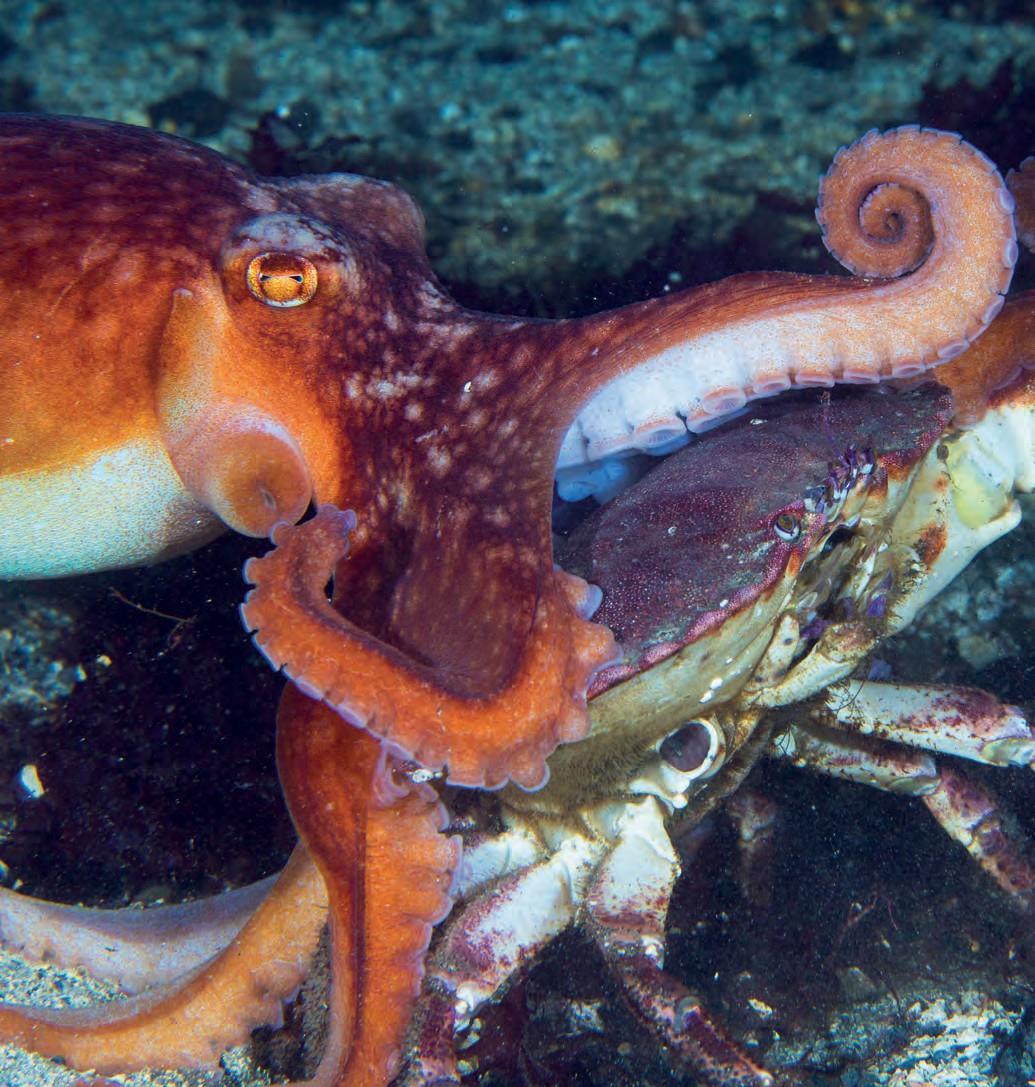



The Crab_materie 15-04-21 14:46 Page 66
The large gull species often feed on crabs that feed on barnacles and mussels in the upper littoral zone

Sculpins are bottom-dwelling fish that are common in shallow water all along the Norwegian coast. They lie well camouflaged on the bottom waiting for their prey, usually small fish or crustaceans. It attacks with a quick lunge forward and swallows its prey in one mouthful. The short-horn sculpin is the largest of the sculpin species and can grow up to 50-60 cm long and is probably also a danger to large crabs. Long-spned bullheads and Norway bullheads are considerably smaller and are more likely to attack small crabs.
The Atlantic wolffish is a bottom-dwelling fish with a fearsome mouth. It mainly lives on sandy bottoms, often interspersed with stones and boulders. Here it feeds on sea urchins, scallops, mussels and snails, which it easily crushes with its powerful jaws. It probably also feeds on edible crabs, which thrive on this type of bottom.
Cod is also a powerful fish with a big appetite. In addition to small fish and small crustaceans, they feed heavily on shore crabs and small and large edible crabs - especially if they are still soft in the shell after shelling.
Sculpins and bullheads are efficient predators with excellent camouflage skills. They are patient hunters, lying motionless for their prey.
The stone bit easily crushes sea urchins, shells and crabs with its powerful teeth. When the crabs detect the small of wolffish by freezing in a stand-still on the spot catfish in the water, it will often react by stopping and "freezing".

The picture on the opposite page: Cuckoo wrasse, goldsinny and ballan wrasse, together with the cod, 66 all of them a threat to the crabs.

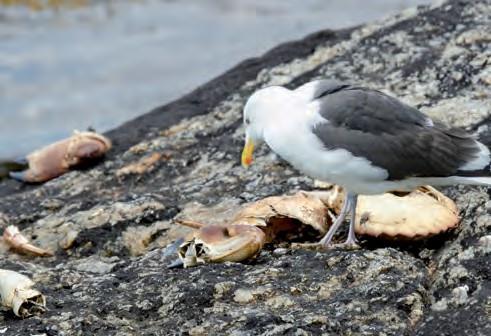
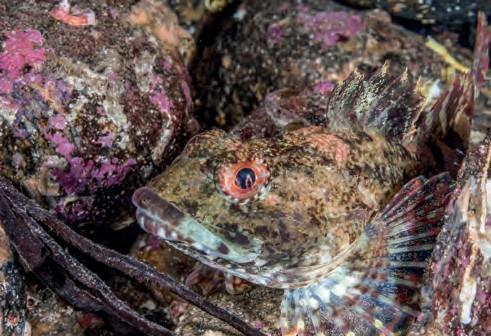



The Crab_materie 15-04-21 14:46 Page 67





The nervous systems of crabs and other crustaceans have many similarities with those of even simpler invertebrates such as earthworms and marine polychaetas. Both animal groups are basically made up of many joints. This body structure isbestpresentedinthedesignoftheneuro system. Earthworms have a simple structure, with a series of joints in which the nervous system has practically the same structure in each joint. We can see something of the same thing in the jointed tails of lobsters and prawns. Each of the tail joints has the same structure - with a small, central nerve node.

In the arthropod family, which includes insects, spiders and crustaceans, there is, however, great variation in the form and function of individual body joints. In crabs, the joints that make up the carapace have grown together into a compact box - shielded by the carapace. Here, all the small nerve nodes are grown together in a larger central node under the carapace, roughly in the center of the body. The foremost joints, which now make up the head, also have a distinct neural junction. This central node - densely packed with nerves - is what we often refer to as the crab's "brain". It does not have a cerebral cortex, as vertebrate brains do. It is therefore not correct to say that crabs have brains based on the medical definition. Although there are significant differences between the mammalian brain and the crab, it still has a number of functions in common with our brain. We will therefore call it a brain i this book


The last remnants of the original decentralized nervous system are the small, packed nerve nodes close to the mouth, as well as along the central main nerve strands that connect the "brain" and the nerve center under the spinal skull, and the nerves from there out to the whole body.
The central nerve node under the carapace, together with othersmallernerve nodes, controls muscles and movement, among other things. The brain at the front of the head is full of different types of sensory nerves and neurons that coordinate sensory impressions. It is quite common for crabs to be "euthanized" by inserting an awl through the abdomen. When the crab is "killed" in this way, only the legs are paralyzed, but not the senses. The head nerve node must also be crushed to switch off all nerve activity.
A safe and quick method of killing is to split the body in half lengthways. Boiling also kills the nerve cells relatively quickly, probably the brain in the head first, as it is near to the shell.
From the various nerve nodes, the long nerve fibers extend all the way to the tips of the feet. Since the nerves leading to each foot have their nuclei inside the nearest nerve node, this means that if a bone breaks off, the neurological damage is limited. The nucleus of the nerve is well protected inside the nerve bundle inside the body. The neural extentions in the limbs grow back over time. If legs and claws are torn of by force The reason for this is explained on page 88.


The Crab_materie 15-04-21 14:47 Page 97






New nerve cells are formed as long as the crab lives. This means that the sensory system is regularly maintained. In fact, new nerve cells are produced daily in the nerve node associated with the senses of smell and taste. Such cell births have been seen in many animals, including humans, but it is in crustaceans that this entire process is described.
Nerve cell regeneration is a basic natural property, especially in parts of the brain that are important for interpreting the environment, memory and sense of place.
Despite the relatively simple nervous system, the crabs have some marvelous senses and reflexes. The various nerve nodes that make up the crab's central nervous system work together to control behavior based on the senses. Behavior can be triggered by simple reflexes - to more complex reactions based on combinations of several sensory impressions and different signals. Crabs can also learn from positive experiences, even though they are dependent on innate reactions to avoid mortal danger. Learning is particularly useful for orientating themselves on the bottom. The learning ability is put in good use when the crab looks for where the best hunting areas are, how to open shells, what is a good hiding place, and the shortest route to it.

The picture on the opposite page: Sand gobies eagerly swim around the burrowing crab, nibbling edible particles that are whirled up.


The sensory areas of the brain that are linked to smell and the coordination of nerve signals are constantly receiving a supply of new cells.
Under:
The image at the bottom shows new nerve formation in the lobster brain, where the largest luminous fields of new cell formation at the outer edges are olfactory centers. The image below shows a detail of such a center with new cells
The color is formed by chemical compounds added to the live lobster larva's brain. The dye only binds when new cell nuclei forms.
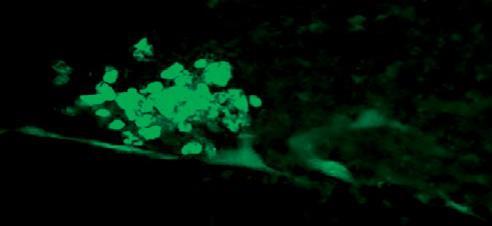
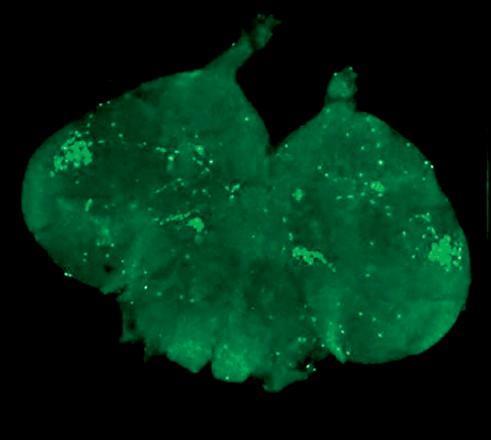


The Crab_materie 15-04-21 14:47 Page 99

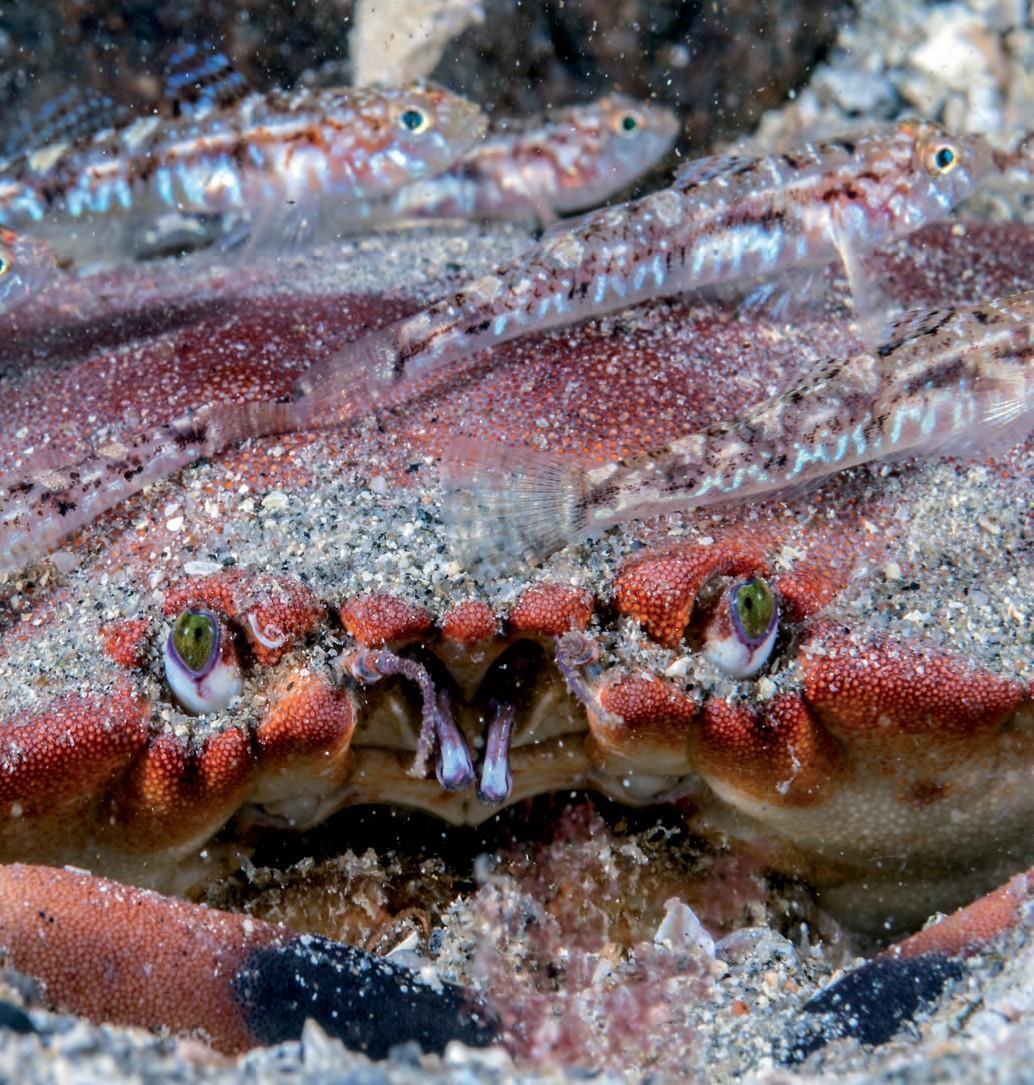




Crabs do not have ears. Nor do they have hearing centers in their nervous system. What we perceive as sound, the crabs pick up as pressure waves in the water. This applies both to ordinary water currents and to pressure waves created by nearby movements. Sensory hairs, pointing out through the shell, register external pressure and other contact. Along with the taste and smell detection, these fine hairs are found all over the body, mouth parts, feet, claws and antennae. The hairs give nerve impulses when they are bent and straightened. Some of these are non-contact receptors that register wave patterns in the water as lowfrequency vibrations. The crab therefore "hears" with its entire body.
Crabs see with facet eyes, with many similarities to insect eyes. Receptors in their lenses indicate that they can see polarized light, but hardly colors to any great extent. Nor do they see sharply, but this is of little significance as the crab is often found in dark or murky water. However, their eyes are very sensitive to changes in brightness. When a shadow passes over a crab, it reacts spontaneously by moving into a defense position or hiding. Crabs avoid bright light and prefer to hide during the day. Twilight and darkness are the time for active foraging and socializing Spot lighting, on the other hand, such as spotlights in the water, can attract crabs. The light also attracts other small animals, both in the water column and on the bottom. So, there may be food to be found for the crabs too.


Attempts to scare crabs by flooding areas with light led to an increased number of crabs in the release area.
Light is also of great importance in determining periods of vertical migration for all crustacean larvae during the phase when they live freely in the water masses. Most crustacean larvae appearto move towardsthe surfacewhenit isdarker, probably because they are then less likely to be eaten.
Where circadian rhythm is important for activity, day length is important for annual rhythm. Changes in night length are particularly important, especially the shift from long to short and short to longer light periods. At the winter and summer solstice, the crab sets its "annual clock". Internal nerve signals from the special nerve cells in the central nervous system affect the production of hormones, which in turn are affected by external stimuli. These control seasonal behavior, circadian rhythms, shell change and mating. Such cells are found particularly in the eye nerves, inthebrainandinthenervesaroundthethroatandstomach, but also to some extent in the posterior central nerve node, which controls foot movements.
Although vision is important for controlling crab behavior, there are undoubtedly other senses that are much more important when it comes to obtaining food.


The Crab_materie 15-04-21 14:49 Page 101

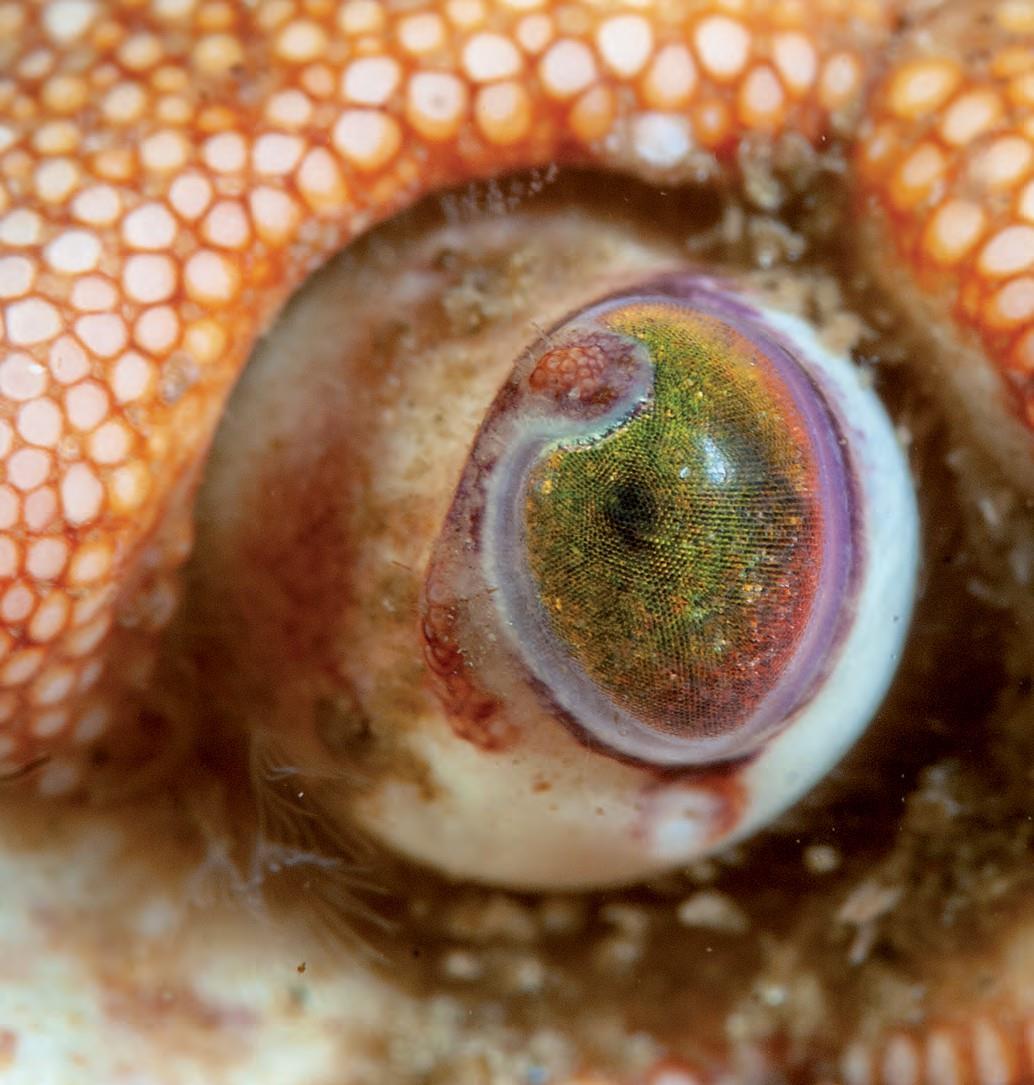



Crabs live in a dark and sometimes murky world, but one that is rich in chemical signals. The crab therefore has a very well-developed sense of smell. It picks up food odors, such as seaweed, from more than 30 meters away. In laboratory experiments, it has been found that crabs begin to actively search for odor molecules that are so diluted that they respond at distances of more than one kilometer from the odor source. The antennae in particular act as the crustacean's nose, with the ability to pick up very fine details from the water's chemistry. The two small, slightly crooked antennae are highly sensitive and of great importance for orientating itself towards hiding places, food and other animals. However, the crab has sensory hairs for smell and taste almost everywhere, and we can see areas with hair fringes on virtually every part of the crab. They are found on the antennae, by the head, close as fur on the mouth parts, and in tufts down the legs and out on all the claws. Ofthese, the outermost tip ofthe walking legs is particularly sensitive. Through these sensory areas, crustaceans can pick up chemical signals from the water around them. Crustaceans not only recognize each other and possible food, but also form an entire map of their surroundings largely based on smell. Crabs can even actively control the water currents around their heads by pumping water back and forth through their gill cavities. They will recognize the smell of different bottom conditions, hiding places, food, other crabs and predators.


The picture on the opposite page shows a close-up of a claw tip. The small pits contain sensory cells that perceive taste
The images below show the special jointed and bent antennae that are important sensory organs for the crab. It is also the sensory organs that are on the outermost joint of the crab's walking leg.
It is through odor that they present themselves and determine whether other crabs are known, unknown or possible partners. When they present themselves with their individual chemical signals or signal that they are ready to mate, the water flow is sent forwards towards other crabs.

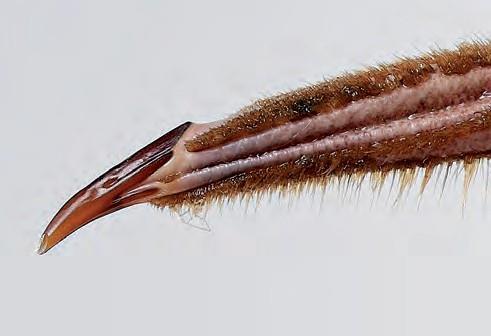




The golden age of hermeticism
Little to no information is available on the importance of crabs as seafood and to the seafood industry in Norway before 1900. In the years 1902 to 1905, around 60,000 edible crabs were sold annually at fish market in Bergen, Norway and it is reasonable to assume that crabs were a commercial product even earlier than this. Most likely, the crab was mainly sold at the leading trading centers along the coast where demand for seafood was generally high, and where it was consumed shortly after landing. In more rural areas, the crab was largely used as bait in line fishing and was considered more of a problem than a resource as it often became entangled in fishing nets - much to the frustration of those fishing for cod and saithe. Some home consumption was probably common, but utilization of the crab as a source of food was largely limited by its short shelf life after landing A significant change came with the canning industry. Canned seafood became a commercial product in the mid-1800s. Canning was mainly used to preserve herring fish (anchovies, sprat and herring), but was eventually used to preserve crab meat. Although some people were canning crabs in Norway as early as 1876 (see page 141), the real growth in crab canning came in the early 1900s. An important cause for this was an article written in 1906, in the fisheries newspaper "Norges Fiskeritidende", by editor Hans Marius Emil Barclay.


In the article, titled Crab canning as a local industry, Barclay describes how lighthouse keeper Stener Storksen, at Espevær in Sunnhordaland, had earned a substantial side income by canning crabs. The news article attracted so much attention that the Society for the Promotion of Norwegian Fisheries established a grant to support people who wanted to attend courses to learn this technique. In October and November of the years 1908 to 1921, several courses were held, initially led by Storksen, but taken over by Theodor Hellesøy from Øygarden outside Bergen after Storksen's death in 1912. A total of 48 people attended these courses, most of them from Sogn og Fjordane and Hordaland, but also attended by participants from Trøndelag in the north to Lindesnes in the south.
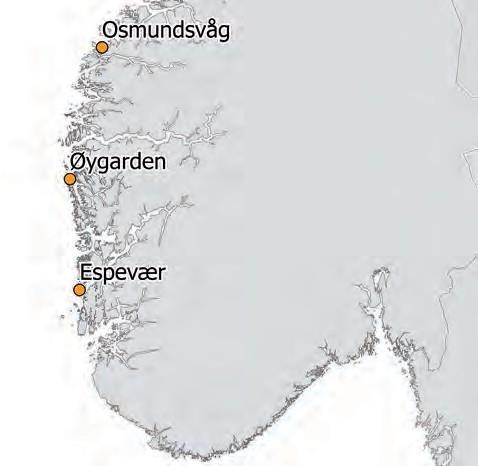


The Crab_materie 15-04-21 14:51 Page 139





Originally, the course was intended to provide coastal residents with a nice extra income, but several of the participants set up larger factories that employed over a hundred peopleduring the autumn fishing forcrabs; mainly women, who worked on extracting and packaging crab meat. In addition to the course packing, others also started canning crabs, including several companies that were well established in canning other seafood. Increased demand from the canning factories led to an increase in fishing for edible crab, providing welcome income for coastal fishermen. Increased catches gave the edible crab the status of an exploitable marine resource and was thus established as a separate area in the fishery statistics from 1914. Until 1930, the counties that fished the most crab were Rogaland and Vestland, but during the 1930s several factories were also established in Møre og Romsdal and Trøndelag.
During the Second World War, the fishery was significantly reduced as a result of an import ban in the UK, the most important market for Norwegian tinned crab. Shortages and quotas on tin packaging both during and immediately after the war also meant that some factories had to restrict their intake of crab. When the market reopened towards England and tin materials was no longer in short supply, fishing picked up quickly.
In the record year 1949, almost 9,000 tons of landed crab were reported in Norway, withTrøndelag now in first place in terms of catch volume.



However, the good times lasted not for long, as the large volumes produced meant that stocks in both Norway and the UK were still full at the start of the next season. Perhaps of greater significance was the fact that in 1949, the UK implemented a significant devaluation of its currency. Due to the weaker British currency, several importers canceled their orders with Norwegian crab exporters. Most Norwegian factories got into economic hard time and many had to close down.
In the years leading up to the late 1980s, landings of edible crab gradually declined from around 5,000 tons in 1955 to less than 1,500 tons annually from 1987 to 1992. The decline was due to several factors, including further restrictions on market access, increased competition from foreign canned crab products, and rising labor costs in manual canning production.
During the last period of recession, the government granted various subsidies in the hope of safeguarding jobs in rural areas. At the end of the 1970s, with the aim of achieving better coordinated production and sales of crab, it was decided that the remaining producers would sell their products through a joint sales company, Norcanners Ltd AS. Unfortunately, these measures did not lead to a revitalization of the canning industry, and by the end of the 1980s most of the factories had ceased operations. However, a few endured. The factory of one of the course participants at Hellesøy in 1921,Sigurd Løkeland, operated continuously until the premises burned down in 2017.


Crab_materie 15-04-21 14:51 Page 141



Norwegian registrations of landed edible crab from 1914 until 1992. The lowest catch in the post-war period was 1300 thousand tons. This was a red light for the crab industry.

One of the pioneers of crab canning was Christian Bonny Uchermann Wiese, who in the autumn of 1876 carried out tests on canning crab at home, Osmundsvåg in Sogn og Fjordane.
The trials were reported in Fjordenes blad in January 1877, where it was written that:
"He [Wiese] has succeeded in delivering an excellent product in terms of flavor, which seems to us to have every prospect of acquiring a significant market."
The attention surrounding this product also meant that Wiese was part of the delegation of fishing companies sent to the World Exhibition in Paris in 1878, where his canned hermetic crab meat received an honourable mention from the international award committee.
However, the focus on crab and other products was steeply uphill and Wiese struggled with product sales until the company was declared bankrupt in 1890.

Christian B. U. Wiese (1849-1925) who was possibly the first to try canning crabs in Norway. Wiese was also mayor of Selje municipality, Norway, from 1876 to 1890.


The Crab_materie 15-04-21 14:56 Page 164

The picture on the opposite page: Åkra Sjømat is located in the red buildings at the end of the idyllic Årebrotsholmen. The crab factory is located on the far right of the picture. and the entrance to the fish shop on the left.
Åkra Sjømat
Åkra Sjømat, in Vestland, Western Norway, was started in 1992 by Svein and Heidi Torsen. At the time, it was a family business specializing in crab cleaning. To date, the company has been through many expansions and constellations. The company is now owned by several shareholders and, together with HitraMat, is one of the companies in Conchilia Investment Inc.
Åkra operates under several different business areas. The company receives both fish and shellfish from the local coastal fleet. The production plant also contain a factory for cleaning crab. Here, whole cooked crab, crab claws, stuffed crab shells and crab meat in large packaging are produced. The factory uses the latest mechanical equipment to preserve the context of the crab meat. Crab is sourced from local fishermen between Kvitsøy and Bømlo.
Åkra Sjømat AS is located on the idyllic Årebrotsholmen in Åkrehamn on Karmøy. The sea is the nearest neighbour to the west. A breakwater shields the entrance to the dense and cosy settlement in Åkrehamn. The company has its own fish shop in the same building as the crab shop, a popular outlet for both fish and shellfish. In the fish shop they serve a range of crab dishes in their own kitchen.

Outside the company, the sea is rough A seaworth fishing vessel is needed to get out, haul and set the pots i rough seas and get safely back to port for quick delivery of high quality crabs.





The Crab_materie 15-04-21 14:56 Page 165





The Crab_materie 15-04-21 14:56 Page 166
Images on the opposite page: Kongshaug crab's trademark, the red crab, makes the products easily recognizable. Shown here in a onekilogram package with sorted crab claws and stuffed crab shells. Crab claw white meat is a delicate and flavorful ingredient, as an appetizer or here as canapés
Kongshaug Krabbe was started on the family farm on Smøla in 1994. Since then, the company has grown considerably. Today, the factory is located on Hestøya, an island between Fastsmøla and the ferry quay on Edøya. Kongshaug Krabbe is still run as a family business today. The family consists of Edith and Thorstein Dyrnes, as well as the next generation, Tommy and Toril, who all contribute to the day-to-day operations.
It mainly processes edible crabs into various products such as crab shells and claws, but also sells lobster, crayfish and king snails.
The 1,500 square meter factory produces around 300 tons of crab legs a year. Kongshaug Krabbe's reception center is open from around Easter until just before Christmas. The port is located just outside the plant, also means that the crab is processed within 24 hours of the fisherman delivering the live crabs. This means that for much of the year they can guarantee completely fresh products.

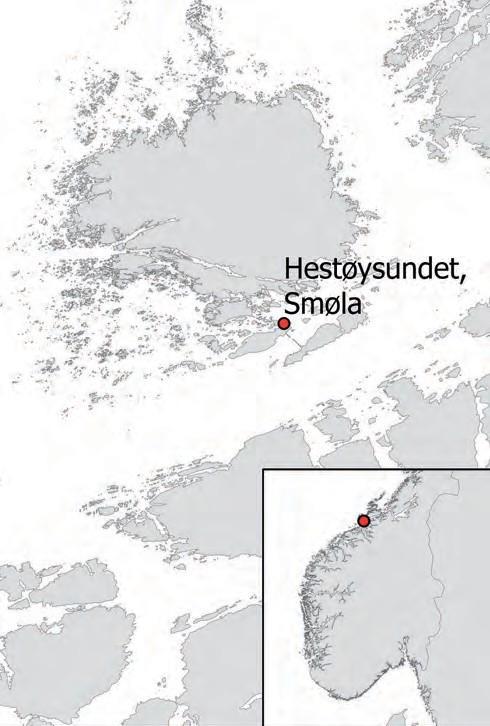


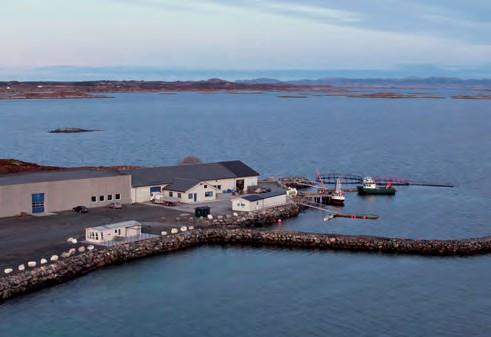


The Crab_materie 15-04-21 14:56 Page 167


